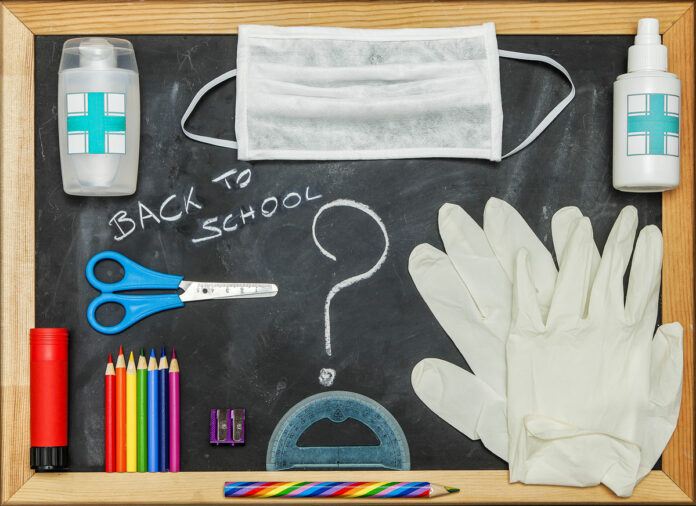MONTEREY COUNTY — Elementary schools in Monterey County may begin planning to reopen after the Feb. 16 announcement that the county’s adjusted case rate has fallen to 24 infected per 100,000 residents.
The school grades affected would be pre-kindergarten through sixth grade. Schools wishing to reopen would need to submit a Covid-19 safety plan to both the county and state for approval.
“The Covid safety plan includes a Covid Prevention Plan that addresses health and safety protocols for adults on campuses,” said Deneen Guss, county superintendent. “If they have the approved CSP, they can open their schools to in-person instruction.”
If a submitted plan needed adjustments, Guss said county officials would work with the school to make the needed changes. If a plan does not get a response after seven days, she said a school district would be allowed to reopen on the eighth day.
Dr. Edward Moreno, the county’s health officer, would be the one to review such plans on behalf of the county.
“Even though that’s very exciting news, I do want to caution everyone to understand that schools are all in different places right now all over the county,” Guss said. ”Some are more ready to open than others if they have been doing behind the scenes planning up to this point and working with their union partners. They may be able to open more quickly than schools that are just now starting to work with their union partners to put their plan in place.”
As of the press briefing on Feb. 17, Guss said she didn’t have a confirmed list of districts that have applied with reopening plans, but noted Carmel had been on standby after prior waiver reopening plans were put on hold by the state.
Some Monterey County school districts have already begun welcoming back limited numbers of students through two separate re-opening frameworks allowed by the state. This includes school districts and private schools that applied for and received waivers to re-open for grades K-6. The waiver process was later eliminated by the state.
In addition, there are schools working with small groups of students for in-person instruction and services following the California Department of Public Health (CDPH) guidelines.
“Once a school district submits their CSP, there is a seven-day period in which that plan is being reviewed by Dr. Moreno and the state’s Safe Schools for All team,” Guss said.
If a school reopens and the health metrics backslide to an infection rate worse than the 25 per 100,000 threshold, Guss said approved schools are able to remain open.
Covid prevention plans would outline all the school’s health and safety protocols, which the school would follow prior to reopening. Such a plan would detail what PPE the schools will be requiring, health screenings, where and how students eat lunch, where students will play on the playground and social distancing protocols.
“It makes it very clear so that when students and staff do return to in-person instruction, they know what to do and how to stay safe,” Guss said. “They know how to ensure that they’re properly social distanced, wearing the right PPE and washing their hands regularly.”
Guss said while official plans have yet to be submitted, that many area schools were already formulating draft reopening plans as early as March of last year, when schools were ordered to close due to the pandemic.
Schools that reopen for in-person instruction must adhere to the appropriate CDPH guidelines. Since there is a requirement to allow for physical distancing, most classrooms will be occupied by only a fraction of their normal capacity.
Schools may comply with CDPH guidelines by adopting a hybrid-learning model, which utilizes stable cohorts of students that are present on campus part of the week and continue distance learning on the days when they are not on campus.
Distance Learning accommodations will be made for families who are not comfortable sending their students back to the physical campus.
“We recognize that people have passionate feelings on both sides of the school reopening issue, and we want nothing more than to get students safely back to class,” Guss said. “School district leaders are working with their school community to develop reopening plans that allow schools to open in the most responsible and safest manner.”
New guidance for sports return
Running parallel to school re-openings has been the ongoing request by some parents, coaches and student-athletes to return sports.
Last week CDPH released updated guidance for youth and recreational adult sports. The guidance applies to all organized youth and adult sports, including school and community-sponsored programs, and privately organized clubs and leagues.
CDPH’s guidance is aimed at giving communities guidelines on how to safely remain physically active while reducing transmission in their communities. Under the updated guidance, outdoor high-contact and moderate-contact sport competitions may resume in the Red (Substantial) tier and the Purple (Widespread) tier, with modifications, including testing requirements for certain outdoor high contact sports.
“Youth sports are important to our children’s physical and mental health, and our public health approach has worked to balance those benefits against Covid-19 risks,” said Dr. Tomás Aragón, CDPH Director and State Public Health Officer. “With case rates and hospitalizations declining across California, we are allowing outdoor competition to resume, with modifications and steps to reduce risk, in counties where case rates are lower.”
Under the updated guidance, outdoor high-contact sports can be played in counties in the Purple or Red tiers with a case rate at or below 14 per 100,000, a threshold that Monterey County has not yet met.
Weekly testing will be required for football, rugby and water polo participants age 13 and over in counties with a case rate between 7 and 14 per 100,000. Weekly testing, either antigen or PCR, is required for all participants and coaches in these sports, with results made available within 24 hours of competition.
Football, rugby and water polo are high-contact sports that are likely to be played unmasked, with close, face-to-face contact exceeding 15 minutes. Outdoor moderate-contact sports, such as baseball, cheerleading and softball, can be played in these counties without the testing requirement.
For more information on the new guidance, visit covid19.ca.gov.















